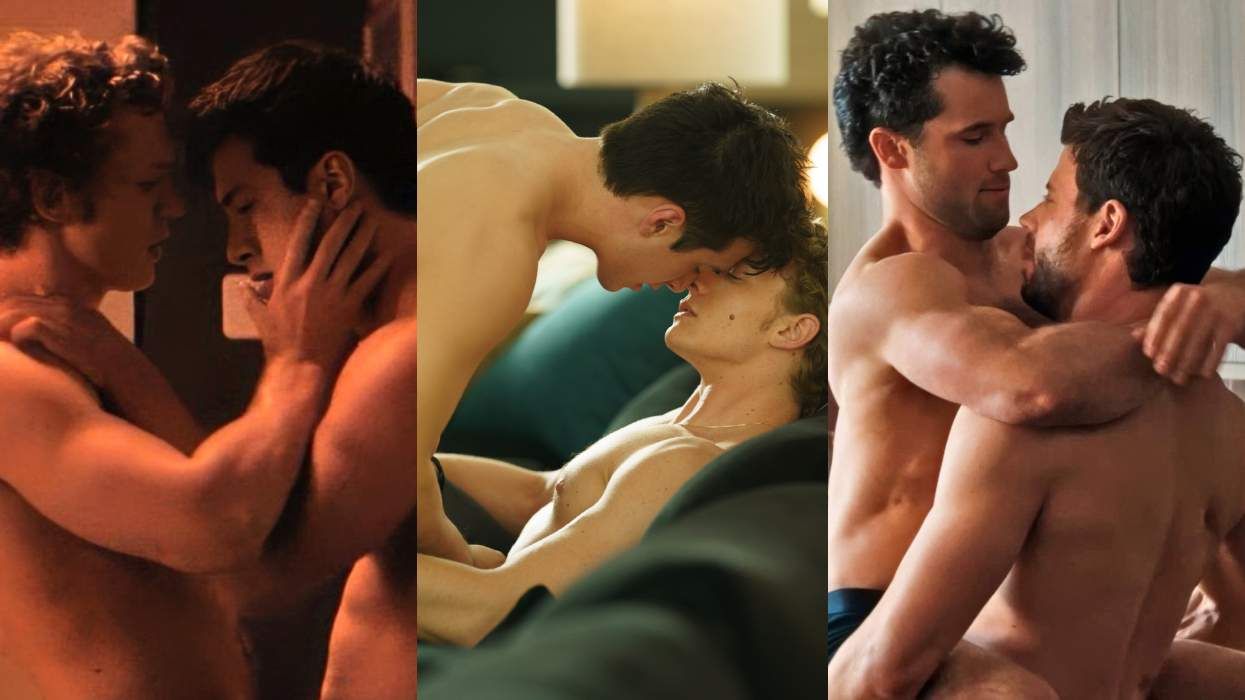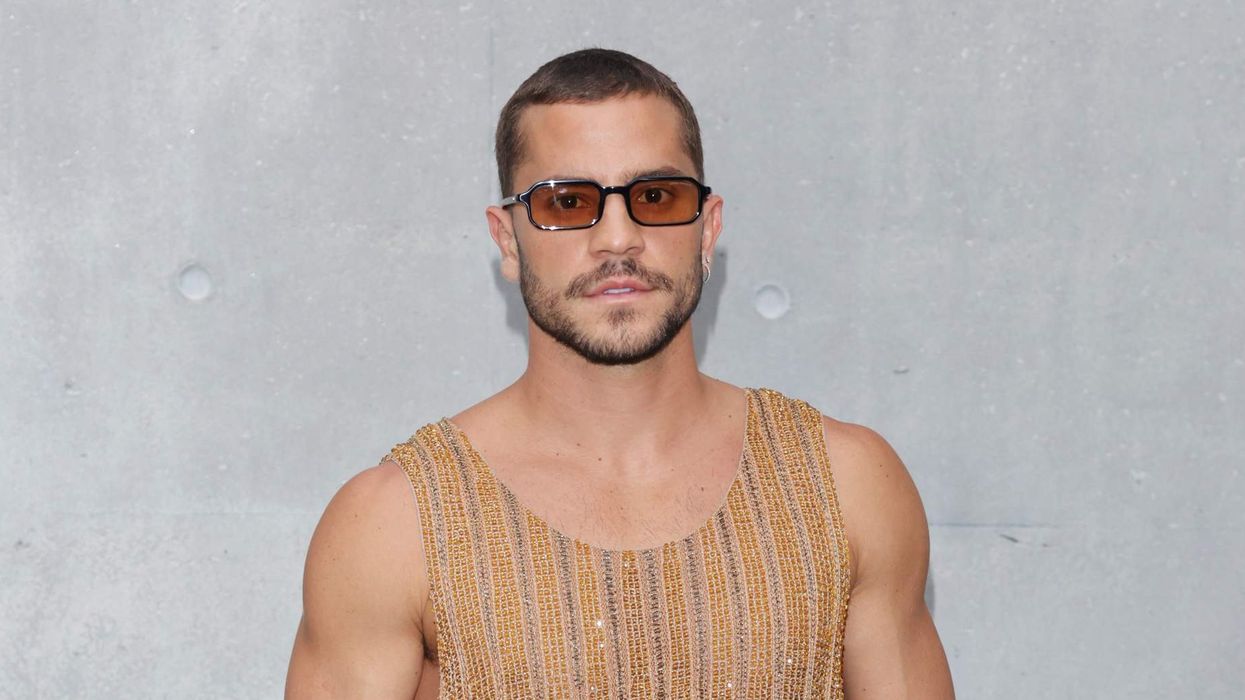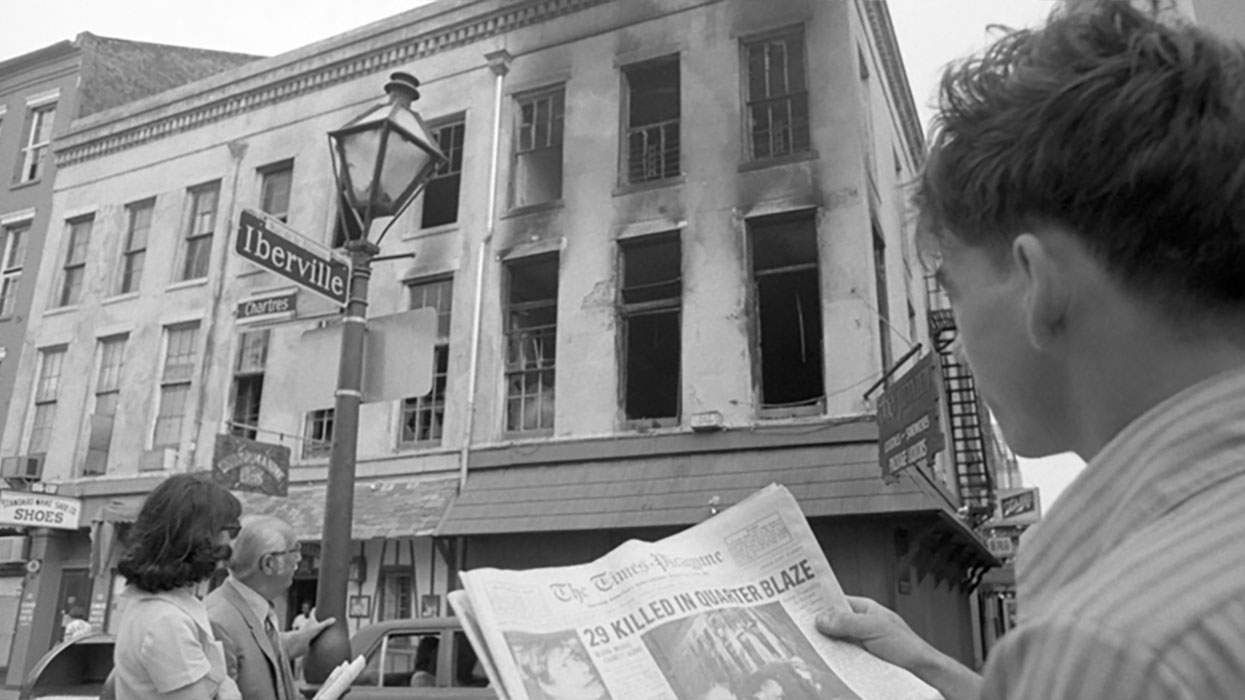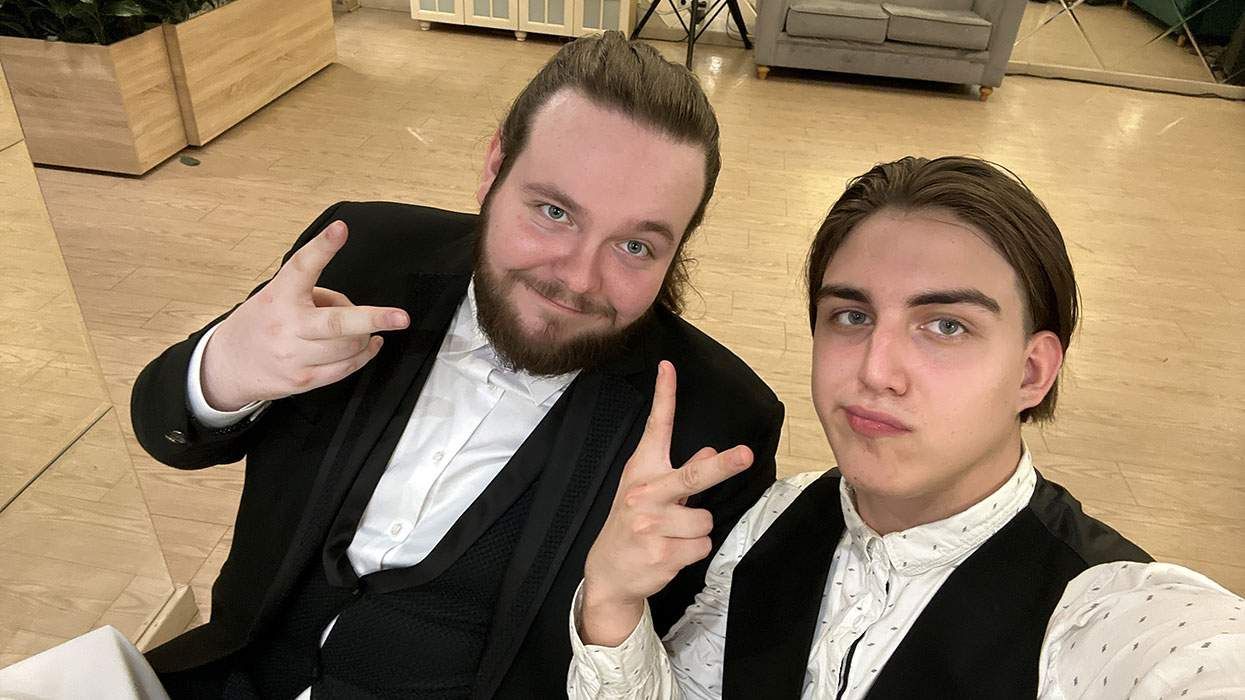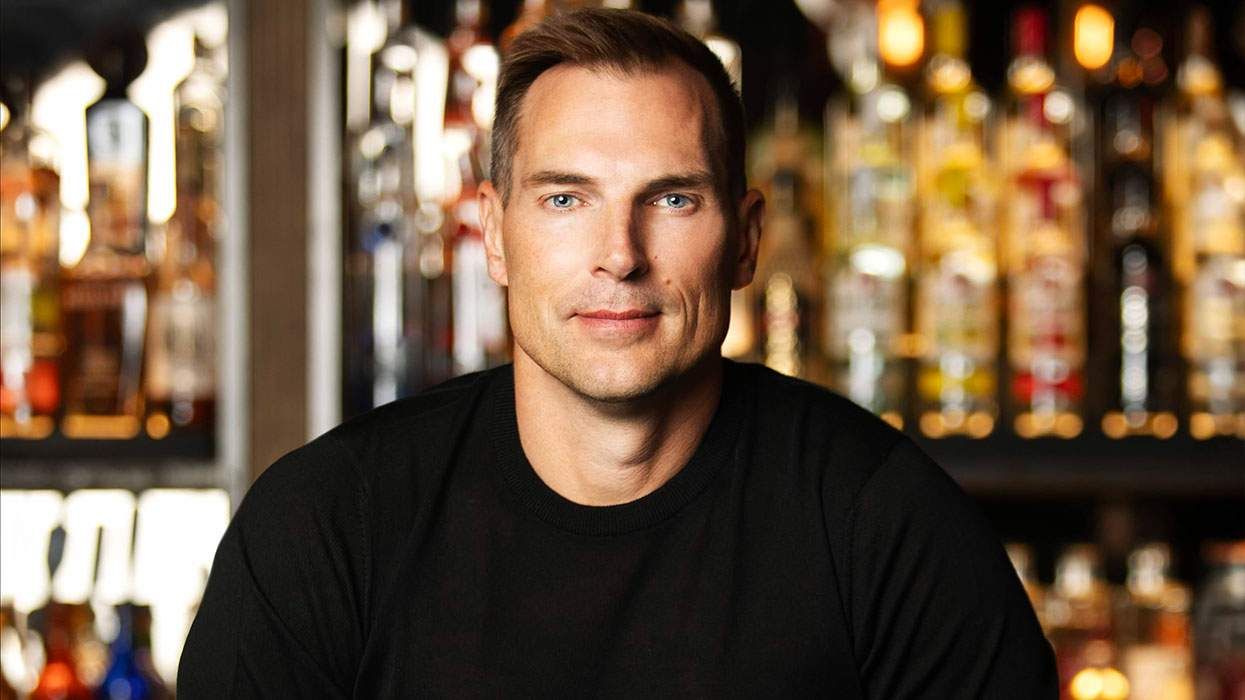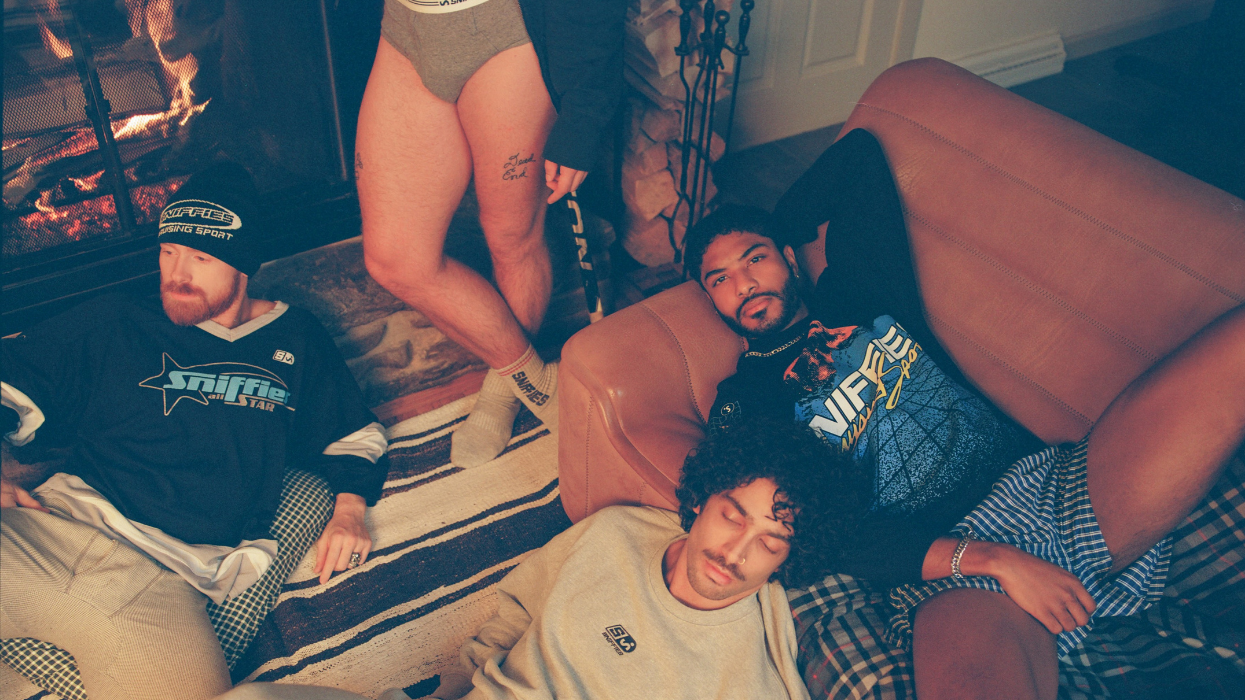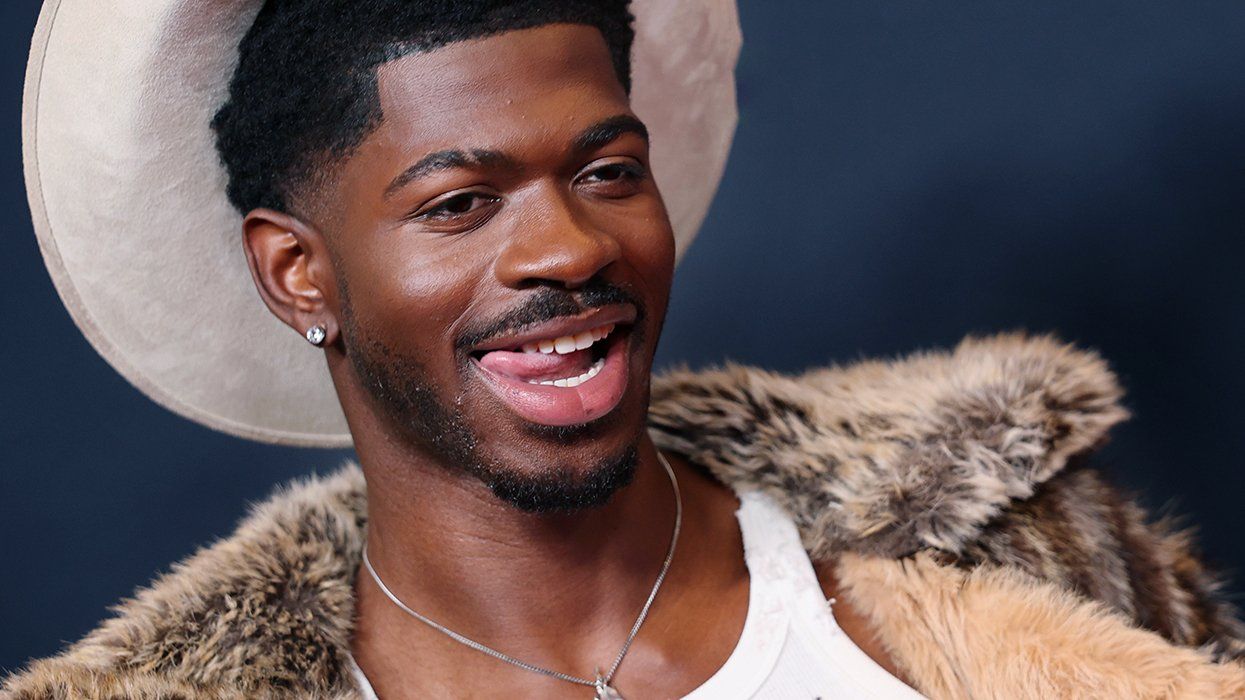How many times in the past 40 years have you heard about the Upstairs Lounge fire in New Orleans? Sadly, probably not many, and certainly not enough. Even though 32 people died, making it the largest mass murder of gay people in American history, this incident is woefully unknown. So, for your edification (or as a refresher), here's what happened: On Sunday, June 24th, 1973, only four years after the Stonewall Rebellion, about 60 people were at a gay bar and meeting space called the Upstairs Lounge in New Orleans's French Quarter.
At around 8 p.m., they heard the bell ring, someone opened the door and fire engulfed the room. Twenty-nine died at the scene. Three died later, at local hospitals.
News reports at the time either didn't mention that the Upstairs Lounge was a gay establishment or alluded to the fact that justice was a futile, fruitless pursuit. And newspapers sensationalized rather than humanized the deaths. Erik Ose paraphrases, "...The States-Item, New Orleans's afternoon paper, described 'bodies stacked up like pancakes,' and that 'in one corner, workers stood knee deep in bodies...the heat had been so intense, many were cooked together.' Other reports spoke of 'mass charred flesh' and victims who were ''iterally cooked.'"
As Ose also notes, the tragedy spawned a hideous joke: "What will they bury the ashes of queers in? Fruit jars." No one at the time, and very few today, mentioned that in addition to being a bar, Upstairs Lounge had hosted Sunday services for the Metropolitan Community Church, the first LGBT-inclusive church in the nation.
Two other MCC churches were torched in the weeks directly preceding the Upstairs arson. In Los Angeles, where it was founded, the church was targeted in January of 1973, five days after Roe v. Wade was decided, and again in April, which destroyed it. Another church, this time in San Francisco, was destroyed in July, after the New Orleans fire killed 32 people, including MCC Reverend Bill Larson.
In a particularly cruel display of social indifference to an attack on gay men, Larson's dead body was left hanging out the Upstairs window for almost an entire day after his death. The police did little to followup on the incident -- chief detective Major Henry Morris shrugged to reporters, "you know this was a queer bar." -- and the public didn't seem to care. Even many of the victims' families didn't want to get involved. No arrests were made. And certainly no self-respecting church or pastor would volunteer to memorialize a bunch of queers. Except for William "Father Bill" Richardson from St. George's Episcopal Church. Closeted and sympathetic, Richardson hosted a small service of about 80 people the day after the fire. He was promptly chastised by his Episcopal superiors, but he clearly inspired some of his spiritual brethren: a Unitarian Church and a United Methodist Church held a joint memorial in the French Quarter in July. About 250 people attended, according to reports.
This year's service, organized by NOLA Pride, is a 40th anniversary event expected to be attended by city leaders, activists, and survivors, and will function as more than just a memorial. It represents the integration of a tragedy, once ignored and mocked, into New Orleans' and the nation's official histories.



